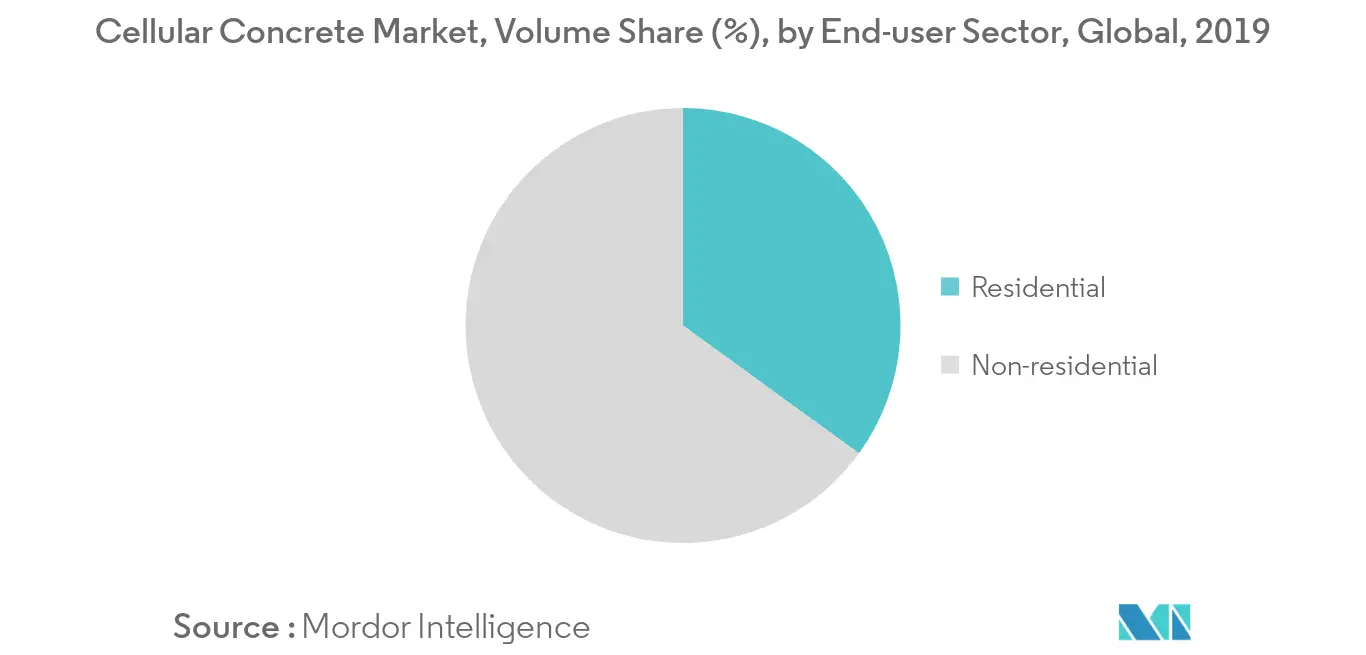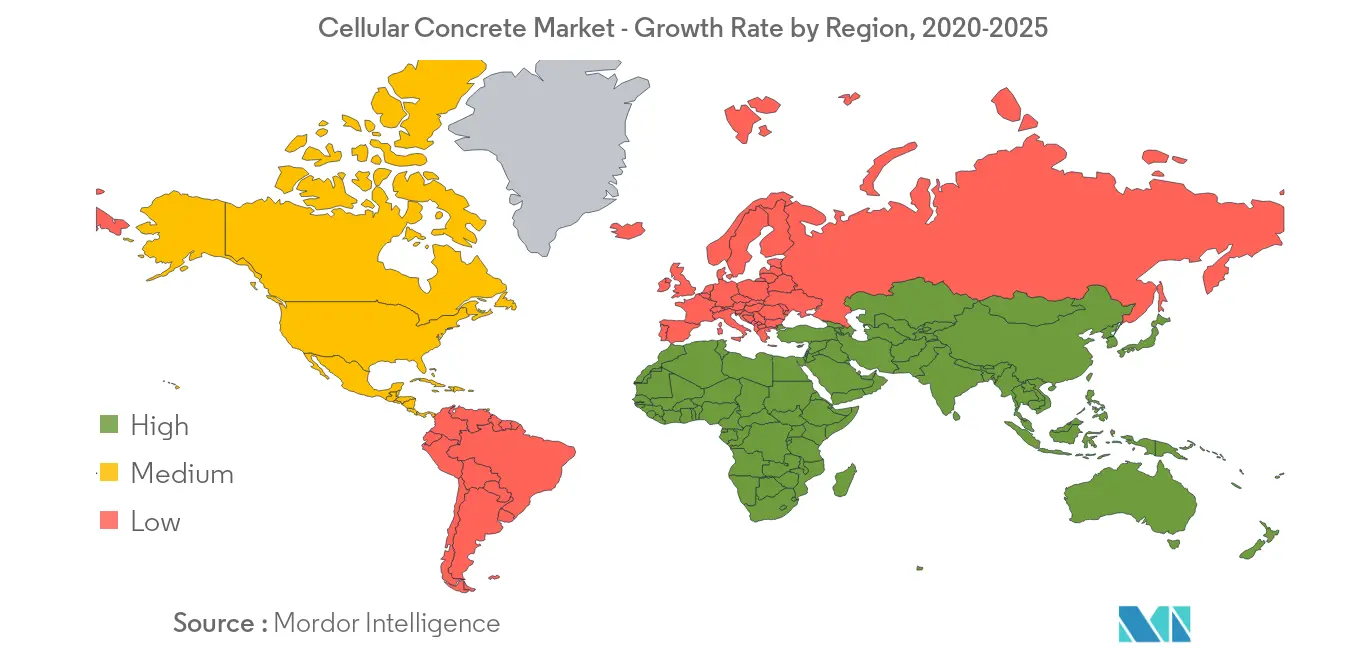Market Trends of Cellular Concrete Industry
This section covers the major market trends shaping the Cellular Concrete Market according to our research experts:
Increasing Demand from Residential Construction
- Over the past 30 years, cellular concrete has been used in the residential sector both for new construction and repair and refurbishment in buildings. In residential buildings this advanced concrete product is applicable as un-reinforced wall blocks, hollow blocks, and insulation plates. It is also applicable as reinforced wall, roof and floor stuffs, division panels.
- A common application of cellular concrete is as insulation material for roofs. In most applications cellular concrete is either used by itself or coupled with insulation foam to provide required insulation.
- Cellular concrete is used for decks and floors where thermal insulation and noise control are requirements of the designer. The use of cellular concrete provides a cost-effective way to install floors in apartment buildings and high rises, since the material is low density and has great workability.
- Cellular concrete is also utilized in the construction of precast wall systems for residential buildings. Its lightweight nature, coupled with its resistance to moisture damage, makes it a practical and an environment-friendly product.
- Cellular concrete is majorly used in Europe and Asia-Pacific. Residential construction is witnessing stable growth in Asia-Pacific, with India and China registering significant growth. ASEAN countries have also gained momentum in residential construction. The market is expected to grow during the forecast period.
- Further, increasing awareness among consumers, especially in developed nations, regarding energy benefits associated with green homes, is expected to drive the cellular concrete market in the residential sector over the forecast period.

China to Dominate the Market in Asia-Pacific Region
- China dominated the Asia-Pacific market share. With growing investments and the construction activities in the country, the demand for cellular concrete is projected to grow during the forecast period.
- The continuous improvements in economic conditions in the region have enhanced the financial status of the consumers, in turn, boosting the demand for buildings and other infrastructural activities in the country.
- China’s 13th Five Year Plan started in 2016 as it was an important year for the country’s engineering, procurement, and construction (EPC) industry. In addition to this, the country ventured into new business models domestically and internationally, during the year. Although the construction sector slowed down after 2013, it is still a major contributor to the GDP of the country.
- The country has been spending over USD 100 billion every year to continue building the leading rail system in the world. By 2020, network for high-speed railways is expected to reach 30,000 kilometers, and by 2025, it is expected to further reach 38,000 kilometers.
- Moreover, restrictions on foreign investment on land development, high-end hotels, office buildings, international exhibition centers, and construction and operation of large theme parks have also been lifted. The growth in infrastructure and transportation sectors is expected to boost the cellular concrete market in the country, over the forecast period.


